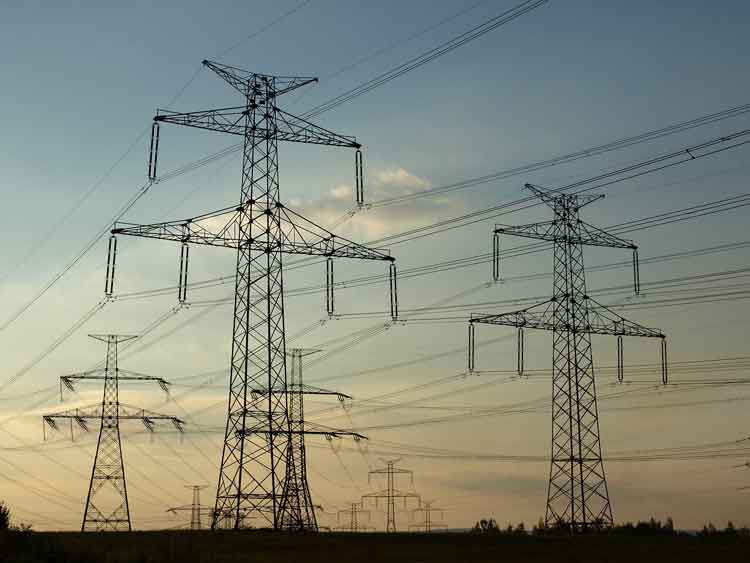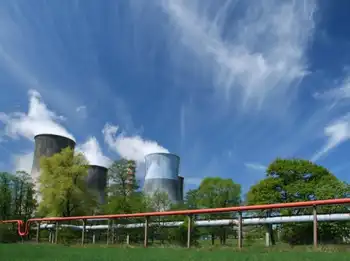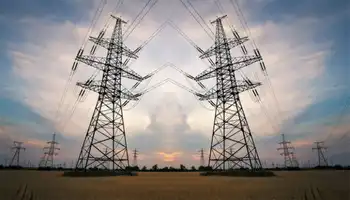Crackdown in U.S. will benefit Ontario
By Toronto Star
NFPA 70b Training - Electrical Maintenance
Our customized live online or in‑person group training can be delivered to your staff at your location.

- Live Online
- 12 hours Instructor-led
- Group Training Available
But tough new rules on coal-fired plants in Smog Alley look to profoundly cut air pollution in southern Ontario. The Environmental Protection Agency is ordering hundreds of U.S. generating stations to cut sulphur dioxide and nitrous oxide emissions by more than 50 per cent in the next few years. Dozens of stations are expected to close and the remainder will have to adopt new, cleaner technologies.
“Whether you live in Toronto or New York City, the flow of pollution does not recognize borders,” said Janice Nolen, air policy specialist with the American Lung Association. “And so, as the EPA moves to tighten standards, we anticipate the Canadian benefits will be significant, particularly along the Great Lakes.”
The Ontario government calculates that U.S.-sourced air pollution is responsible for more than half of southern OntarioÂ’s smog, it causes more than 2,700 premature deaths annually and triggers the hospitalization of 12,000 others. That equates to an estimated $5.2 billion in damage to OntarioÂ’s people, economy and environment each year, the environment ministry says.
Meanwhile, the Ontario Clean Air Alliance credits the Ontario government with achieving a 73 per cent reduction in coal-fired electricity production since Dalton McGuinty became premier.
“So does that mean our air is already cleaner? One thing that is striking is that despite this being such a hot summer we’ve actually had surprisingly few smog alerts in Toronto,” Gibbons said.
“There is no question that the recession is affecting demand for power. But the shift away from coal shows, and other efficiency measures demonstrate, that much of the gains will be permanent. If you combine what’s happening on the Canadian side with regulatory efforts on the U.S. side, it adds up to very good news for Ontario.”
At issue in the U.S. are EPA “transport” proposals published earlier this month that tighten Bush-era limits on emissions of sulfur dioxide SO2 and nitrogen oxides NOx from power plants. When implemented in 2014, the utilities will have to cut SO2 by 52 per cent and NOx by 71 per cent from 2005 levels.
The EPA rules have teeth in and of themselves, but could also serve to prod the U.S. Senate into encoding the regulations in legislation. Public health advocates say that while the earlier Bush-era regulations were struck down in 2008 by a U.S. Circuit Court, the new EPA recommendations are more likely to withstand court challenges and emerge as a firm new standard.
“The electrical utility lobby has been fighting this for decades,” Nolen said. “But the momentum we’re seeing at the EPA suggests that over the next year, the utilities will be facing the decision to implement greater controls and in some cases shut down some of the individual coal plants that are 40 or 50 years old.”
“What is striking is that the EPA appears to have crafted the transport rule in such a way as to be legally bulletproof,” said Frank O’Donnell, president of Clean Air Watch, a U.S. environmental group. “And we believe this is just the first prong of a three-pronged approach, with more rules next year, including standards for hazardous emissions of mercury, arsenic and other unregulated pollutants.”
“It is reminiscent of the tortoise and the hare story. Right now most of the U.S. media are focused on the stalled climate bill in Congress, with Senator John Kerry’s every belch attracting attention. Meanwhile, the EPA is not getting much attention as it busily goes about cleaning up the air in ways that will have a far more dramatic impact in the next decade.”
Transboundary air pollution has long been an irritant to the Ontario government, which has twice hosted Shared Air Summits in an ongoing effort to curtain Stateside sources of smog-forming particles, which scientific analysis suggests is a primary contributor to smog.
“Are we following what the EPA is doing? Yes and with great interest and support,” said Kate Jordan, a spokeswoman with Ontario’s environment ministry.
“More than 50 per cent of Ontario’s smog comes from U.S. sources and we welcome any improvements. It’s good news for us.”
Bruce Hill, senior scientist with the Boston-based Clean Air Task Force, likens the new U.S. regulatory efforts to earlier EPA regulations targeting acid rain, noting that Canada and the U.S. ultimately were proven to have shared $122 billion in benefits from impact-reduction efforts costing $3 billion.
“It would not be a stretch to say that the reductions from the proposed EPA rule should benefit the health, visibility and ecology of adjacent Canada,” said Hill. “Since 90 per cent of the Canadian population lives within 100 miles of the border, Canadians will see the gains.”
Some air quality experts suggest the gains are already underway throughout “smog alley” — the rust-belt corridor stretching along Lake Erie that is frequently blamed as a net contributor to smog in southern Ontario. No consensus yet exists as to whether the recent air quality improvements are a consequence of recession, regulation or a combination of the two.
The U.S. Clean Air Task Force, in testimony before a Senate subcommittee, said the combination of state and federal EPA enforcement brought about a 50 per cent reduction in power-plant sulfur dioxide emissions to 5.6 million tonnes from 11 million between 2004 and 2009.
“The economic recession did not cause the reductions,” the organization testified. “Installation of 130 sulfur scrubbers did it.”











